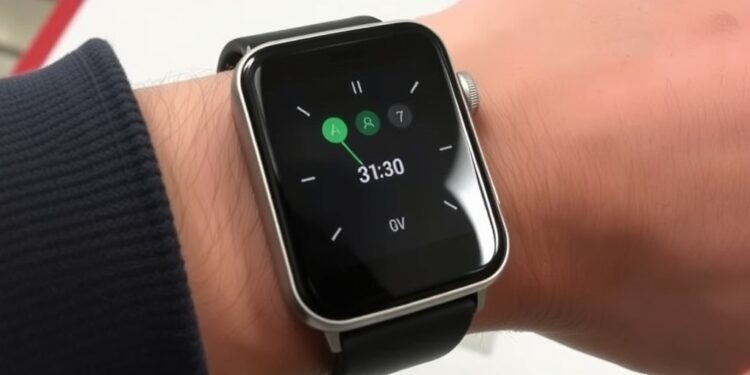In recent years, wearables have increasingly become a prominent tool in the field of health research, particularly for chronic conditions like Parkinson’s disease (PD). Traditional assessment scales that track symptom progression and fluctuations in patients often have limitations that may hinder their effectiveness in clinical settings. A groundbreaking study published in BioMedical Engineering OnLine has sought to address these very issues through an innovative approach, utilizing a comparative evaluation of three popular wearable devices: the Empatica E4, Fitbit Sense, and Oura ring. This research aims to explore the feasibility and reliability of these devices in providing continuous, unobtrusive healthcare assessments for those suffering from Parkinson’s disease.
The motivation behind this study stems from a notable gap in the current methodologies used to monitor and evaluate the symptoms of PD. Established scales, while beneficial, often fail to provide a rounded view of a patient’s condition by only offering episodic insights instead of continuous monitoring. On the other hand, wearables have the capability to track vital signs and physical activity over extended periods, allowing for potentially richer data that could inform treatment strategies and improve the quality of life for patients with PD.
The research included a cohort of 15 patients diagnosed with PD and 16 neurologically healthy control participants, providing a balanced comparison base. Data gathering relied on a combination of established assessment scales, including the Movement Disorders Society Unified Parkinson’s Disease Rating Scale and the Montreal Cognitive Assessment, among others. Furthermore, self-reported diaries were utilized to track patient activities, symptoms, medication times, and sleep patterns. For the study, the three wearable devices were used to collect two weeks’ worth of digital data concurrently, resulting in a robust dataset aimed at answering whether wearables can reliably substitute traditional assessment methods.
Upon meticulous analysis, researchers highlighted significant findings regarding the performance of these wearables. The study notably indicated considerable variations in data characteristics among the devices, leading to unsatisfactory cross-correlation results. This means that despite their potential, the wearables did not consistently align in terms of the metrics they recorded, which raises questions about their interchangeability in clinical practice. Notably, the heart rate and movement metrics could be confidently assessed, while other parameters remained incongruent across devices.
The study revealed that the Empatica E4 and Fitbit Sense generally outperformed the Oura ring in accurately reflecting self-reported activities. However, the research pointed to a weak correlation in output, underscoring the inherent discrepancies in data collected from different devices. Compounding this challenge was the finding that the Oura was unable to record heart rate and movement simultaneously, further constraining its utility in critical times when data synchronization is paramount.
Beyond providing raw data, the usability of these devices has emerged as another critical factor. The research indicated that while the uptime of the devices was acceptable, aspects such as ease of access to raw data, device-specific processing capabilities, and data retrieval methods varied significantly. In fact, the usability grading showed that the Fitbit Sense received a “good” rating, while the Empatica E4 fell into the “poor” category, indicating a considerable gap in user experience. The Oura ring landed somewhere in between, suggesting it might serve as a middle ground, but still lacked critical metrics in its current iteration.
The conclusions of this study shed light on the necessary characteristics for wearables intended for PD research. Factors such as handling convenience, cleaning ease, and data retrieval processes should be optimized to enhance usability. Furthermore, transparency in score calculation, sufficient battery life, robust storage capabilities, and high sampling rates are paramount for these devices if they are to be successfully integrated into regular clinical assessments.
While the three evaluated wearables show promise, none emerged as optimal for the overarching aim of Parkinson’s disease research. However, the study highlights that all three devices have the potential to provide suitable specifications as technology advances and future iterations are developed. The road ahead will require continued innovation and perhaps collaboration among device manufacturers and researchers to address the current gaps identified in this research.
Collectively, this research opens an exciting pathway for ongoing studies in the realm of wearable technology’s application to chronic disease management. The insights gleaned from the comparative analysis of these devices are vital for informing future designs, ensuring that they not only meet the clinical needs of patients but also offer an enhanced user experience that encourages adherence to monitoring protocols. As we continue to harness technology for health benefits, the goal remains to translate these findings into improved healthcare interventions that can fundamentally enhance the lives of individuals living with Parkinson’s disease.
Subject of Research: Wearable Devices in Parkinson’s Disease Research
Article Title: Cross-evaluation of wearable data for use in Parkinson’s disease research: a free-living observational study on Empatica E4, Fitbit Sense, and Oura
News Publication Date: (2025)
Article References: Reithe, H., Marty, B., Torrado, J.C. et al. Cross-evaluation of wearable data for use in Parkinson’s disease research: a free-living observational study on Empatica E4, Fitbit Sense, and Oura. BioMed Eng OnLine 24, 22 (2025). https://doi.org/10.1186/s12938-025-01353-0
DOI: https://doi.org/10.1186/s12938-025-01353-0
Image Credits:
Keywords: Wearable Devices, Parkinson’s Disease, Continuous Monitoring, Empatica E4, Fitbit Sense, Oura Ring, Health Technology, Clinical Assessment.




